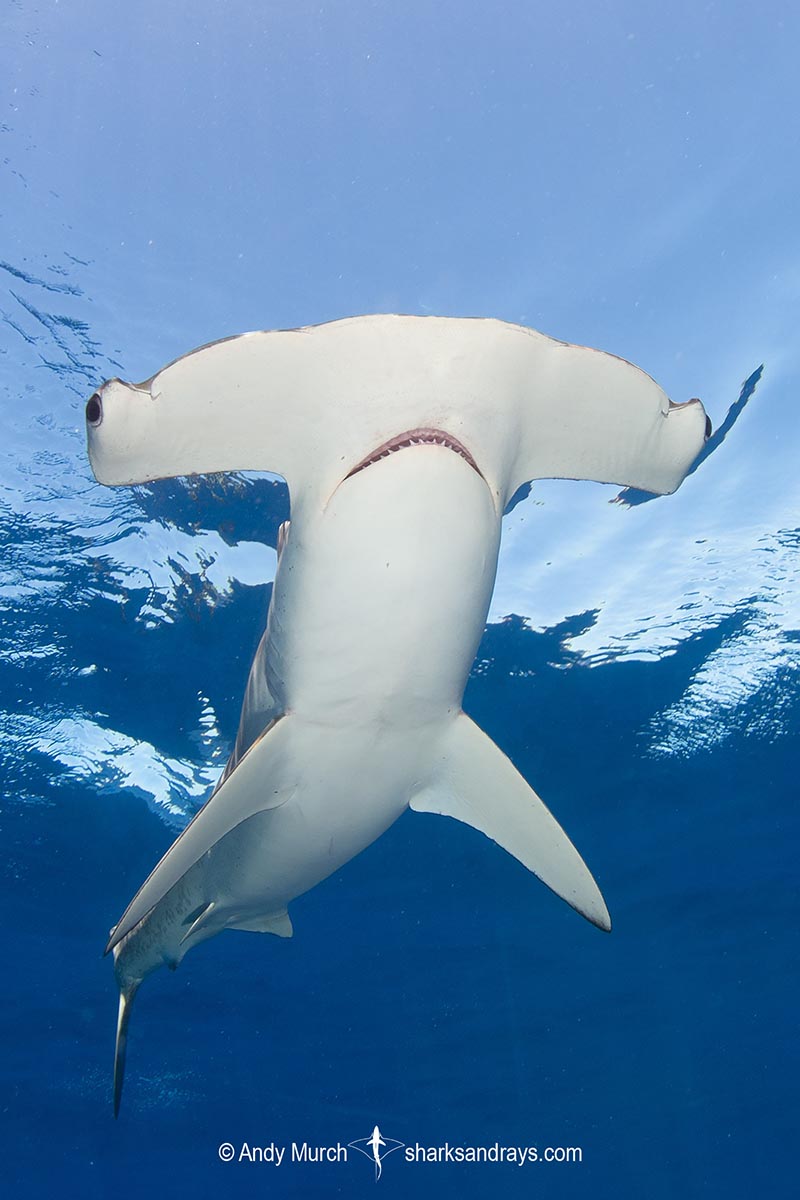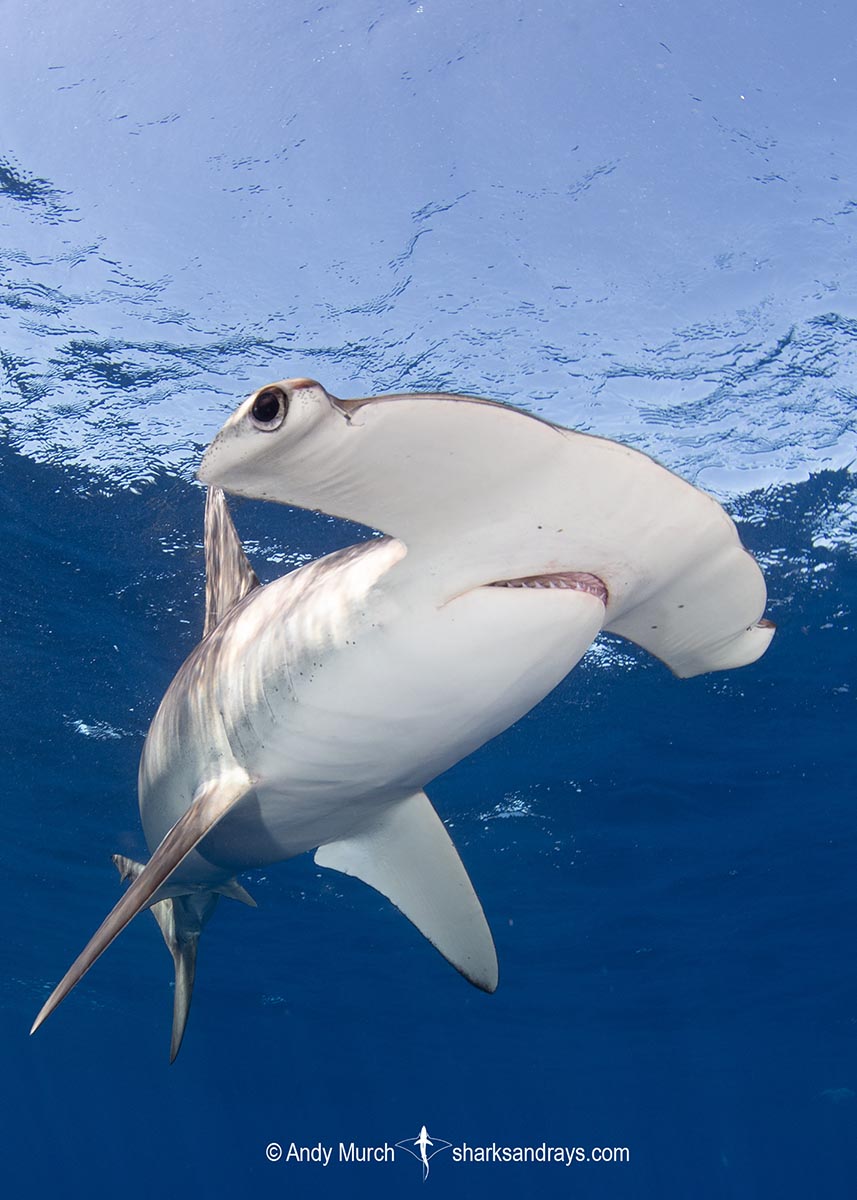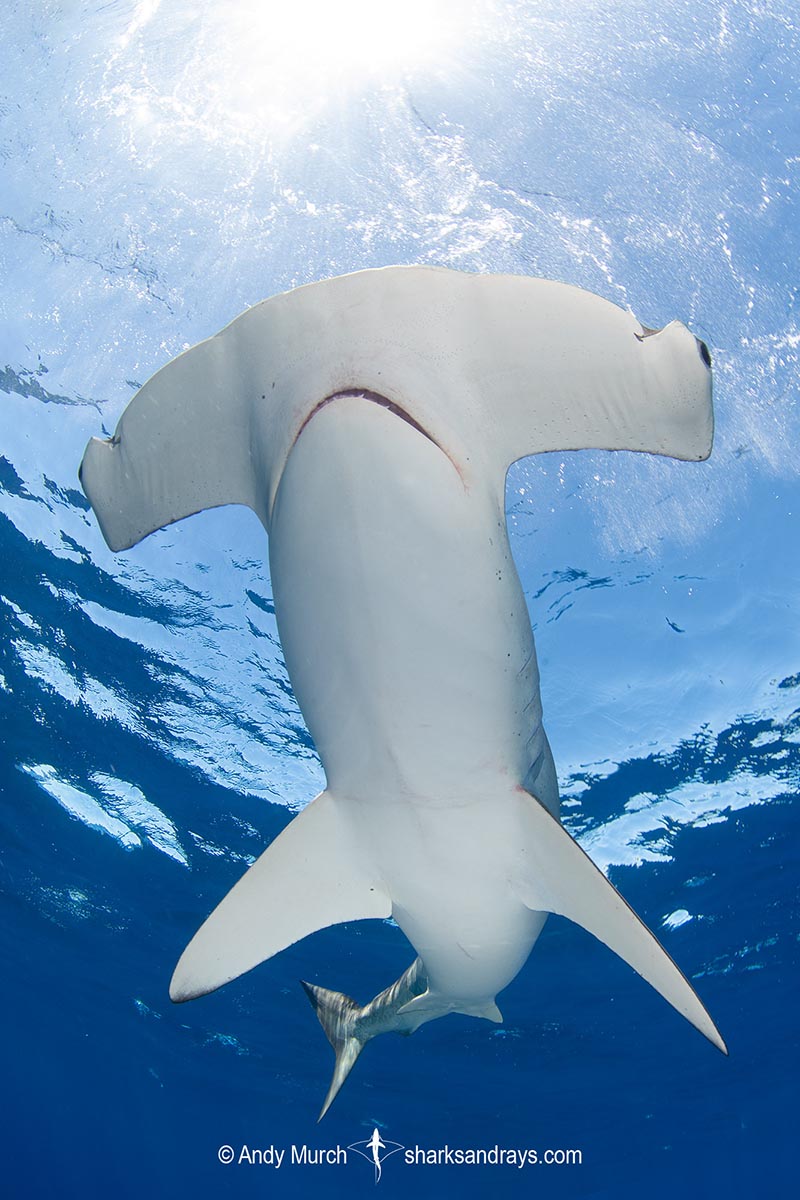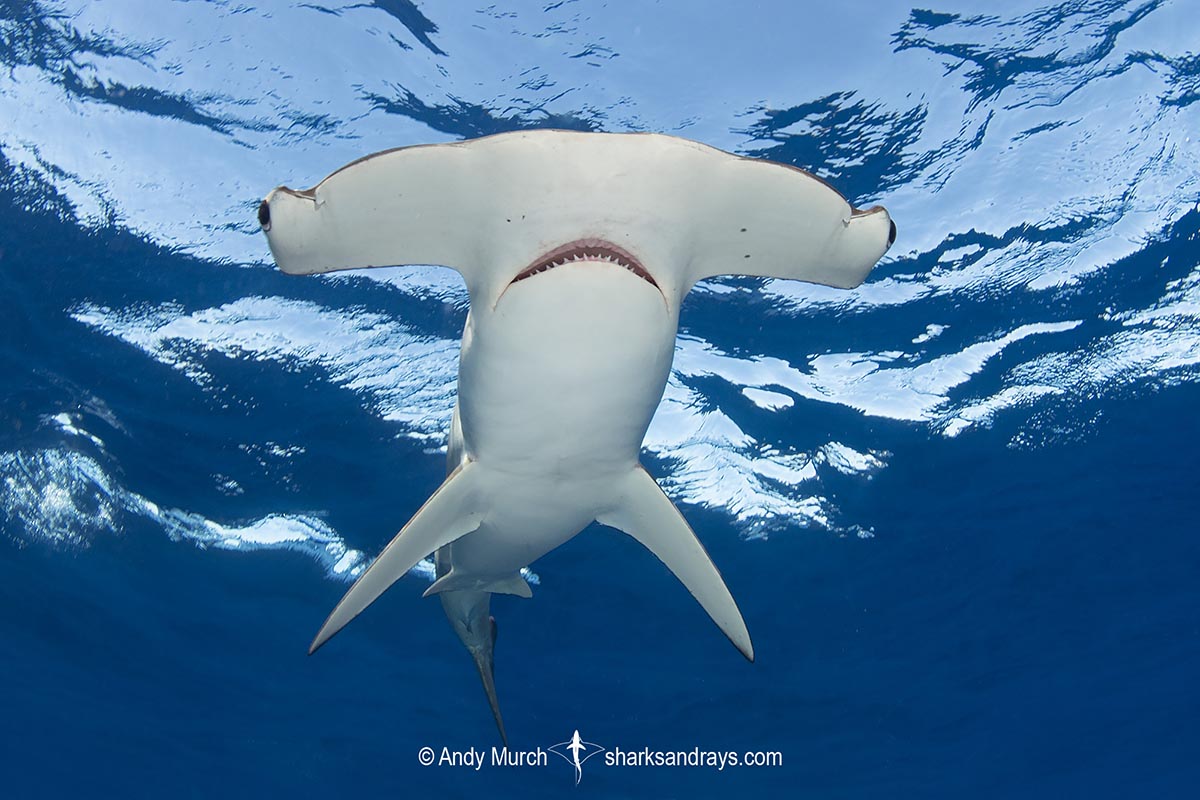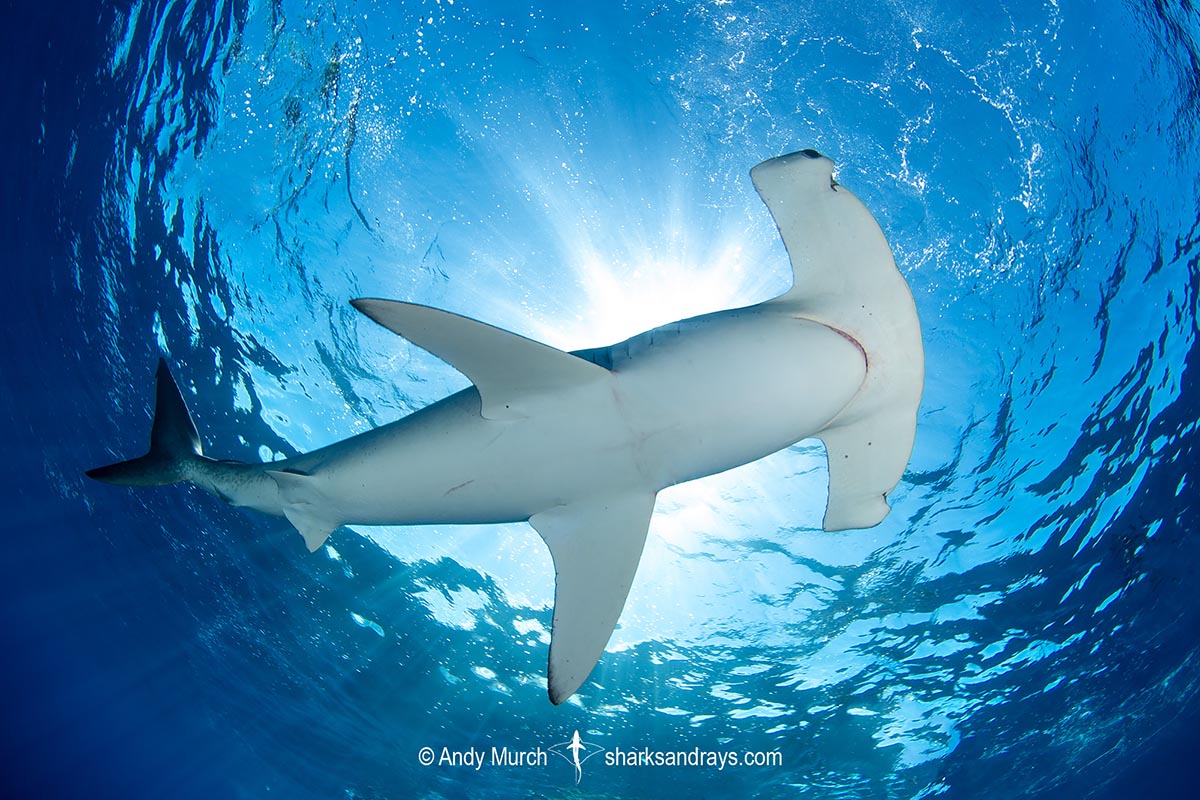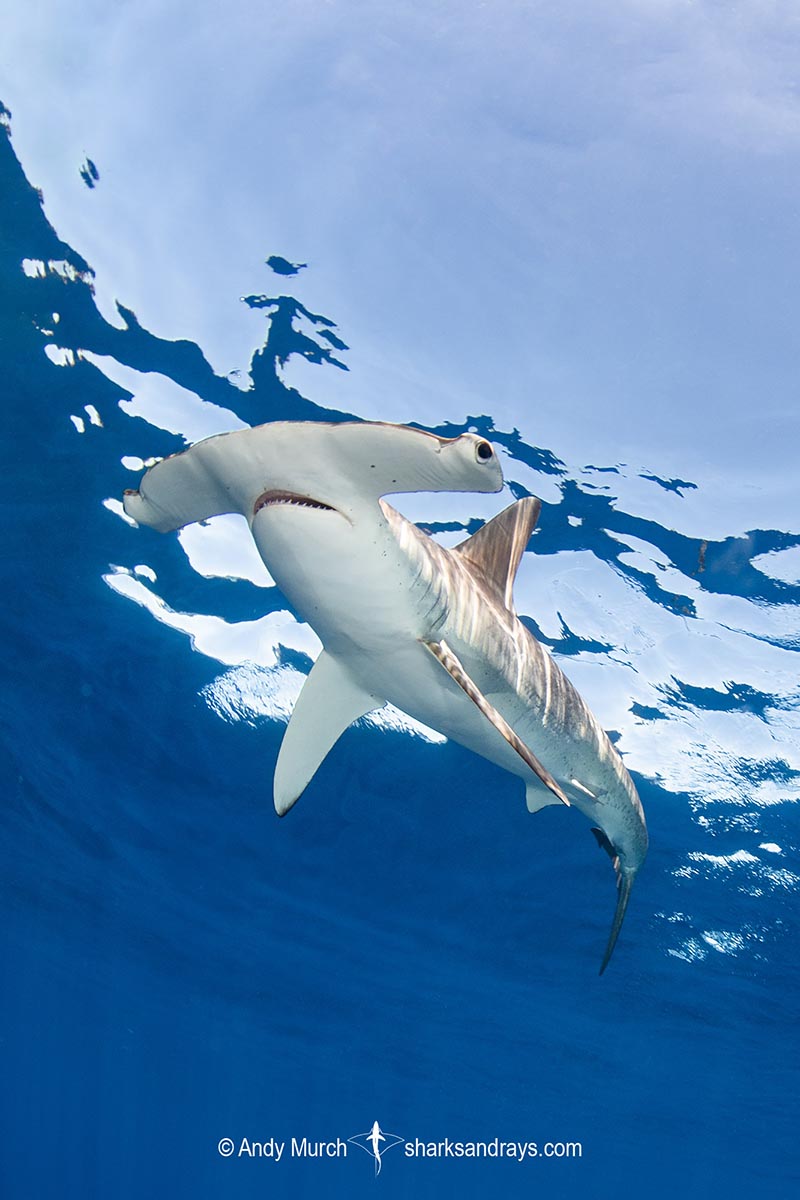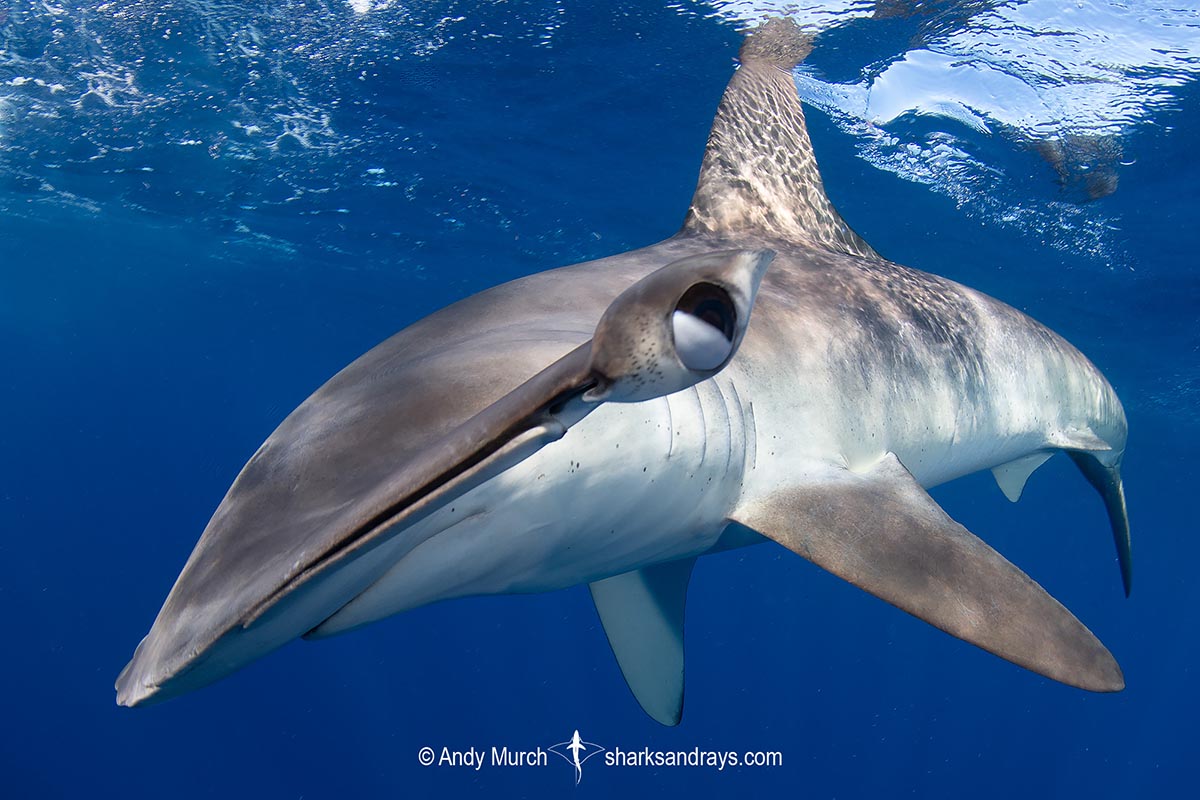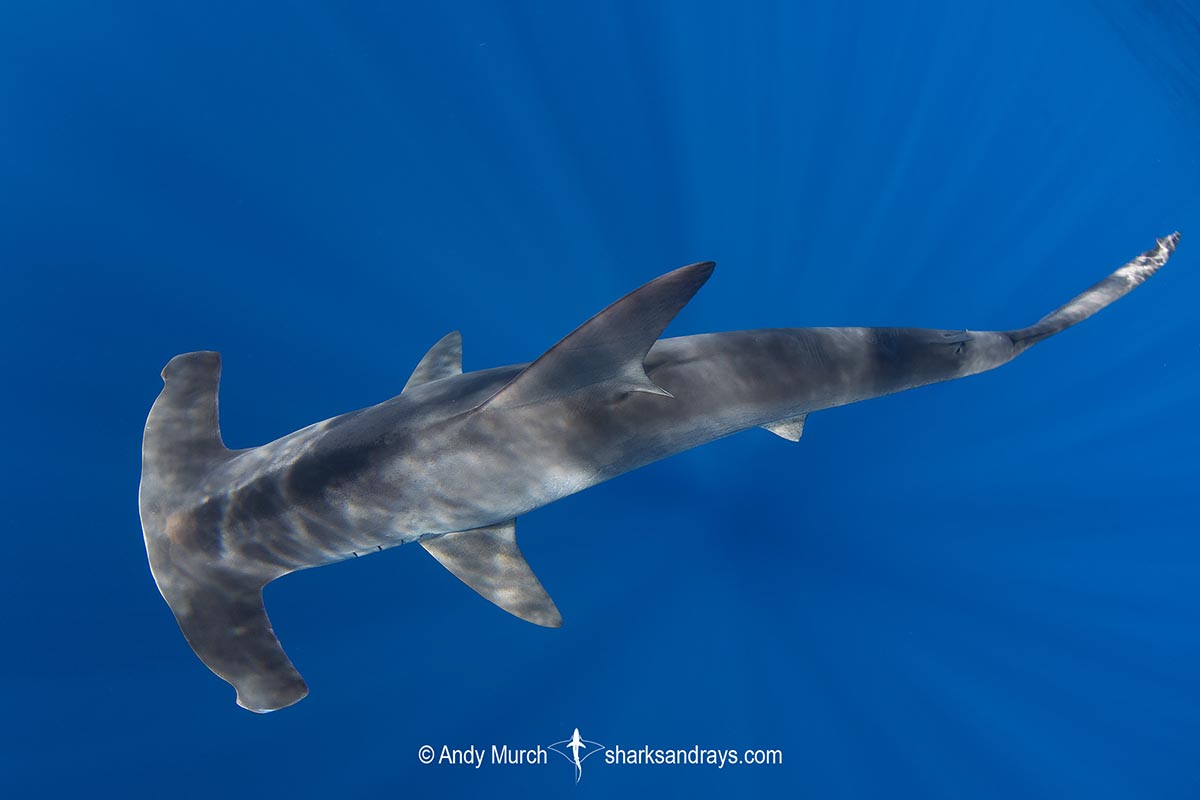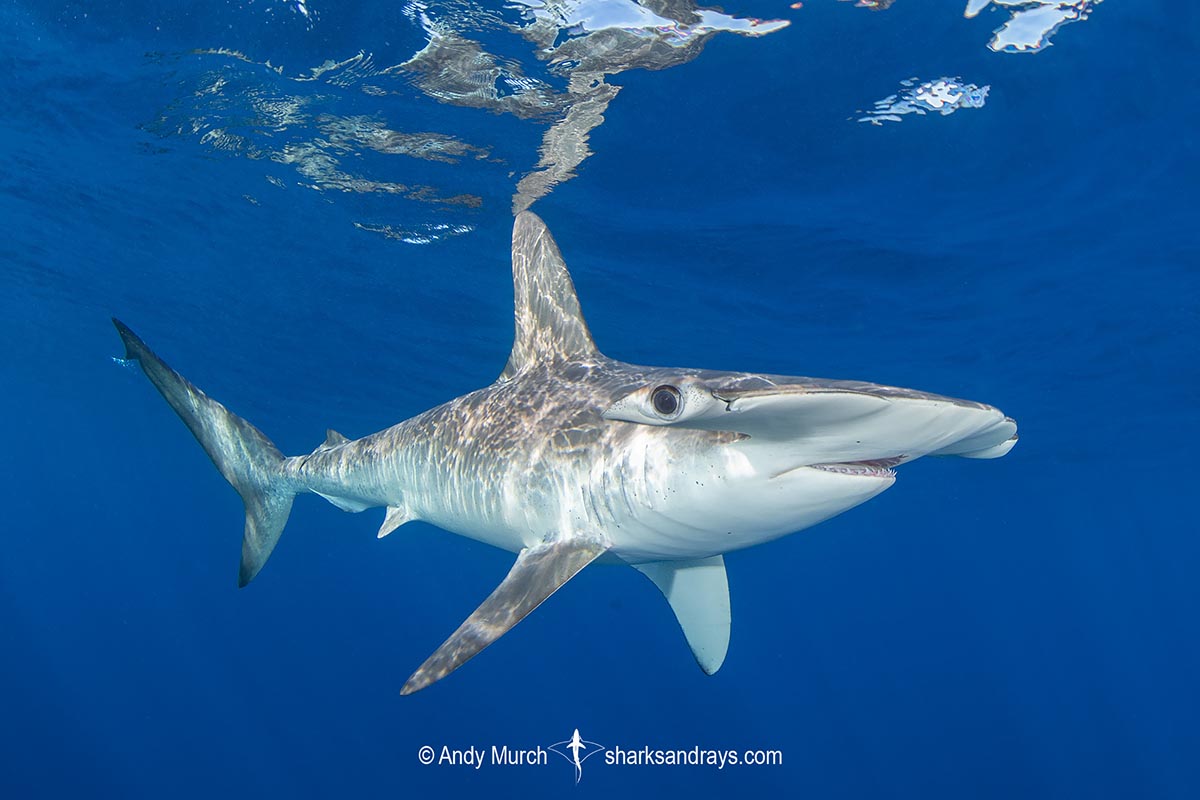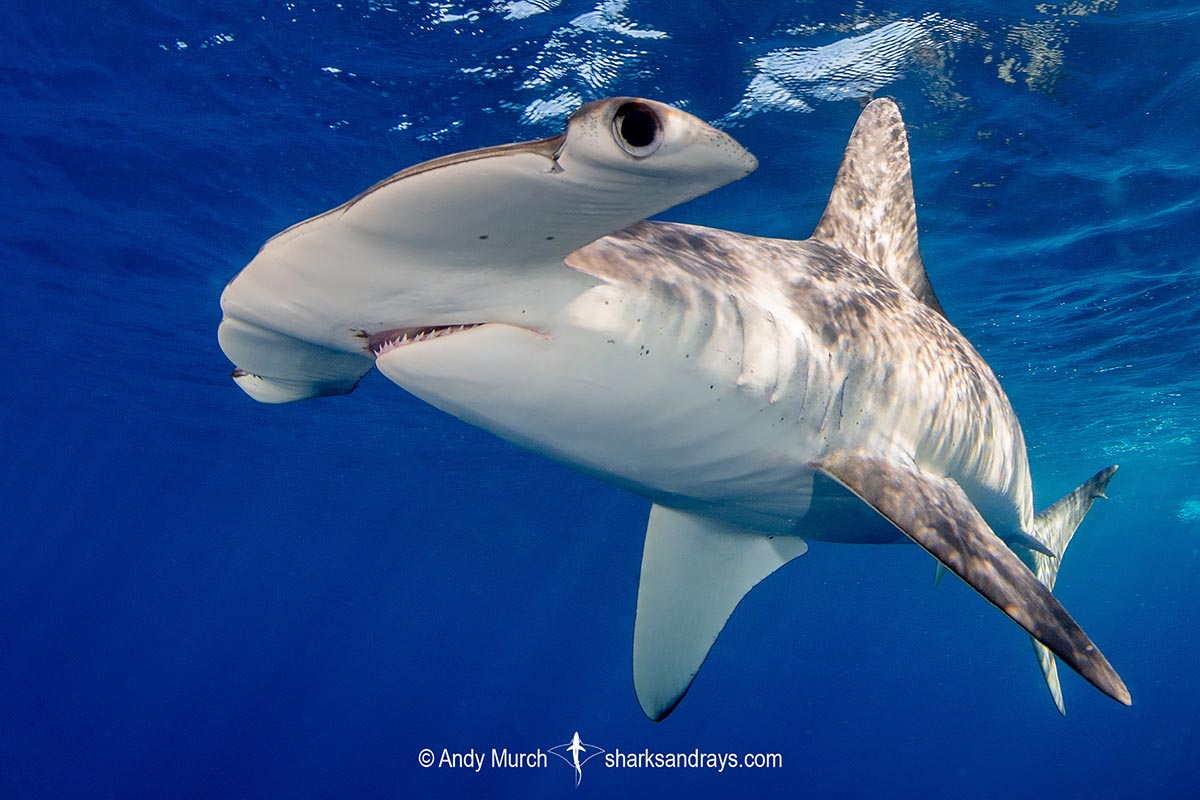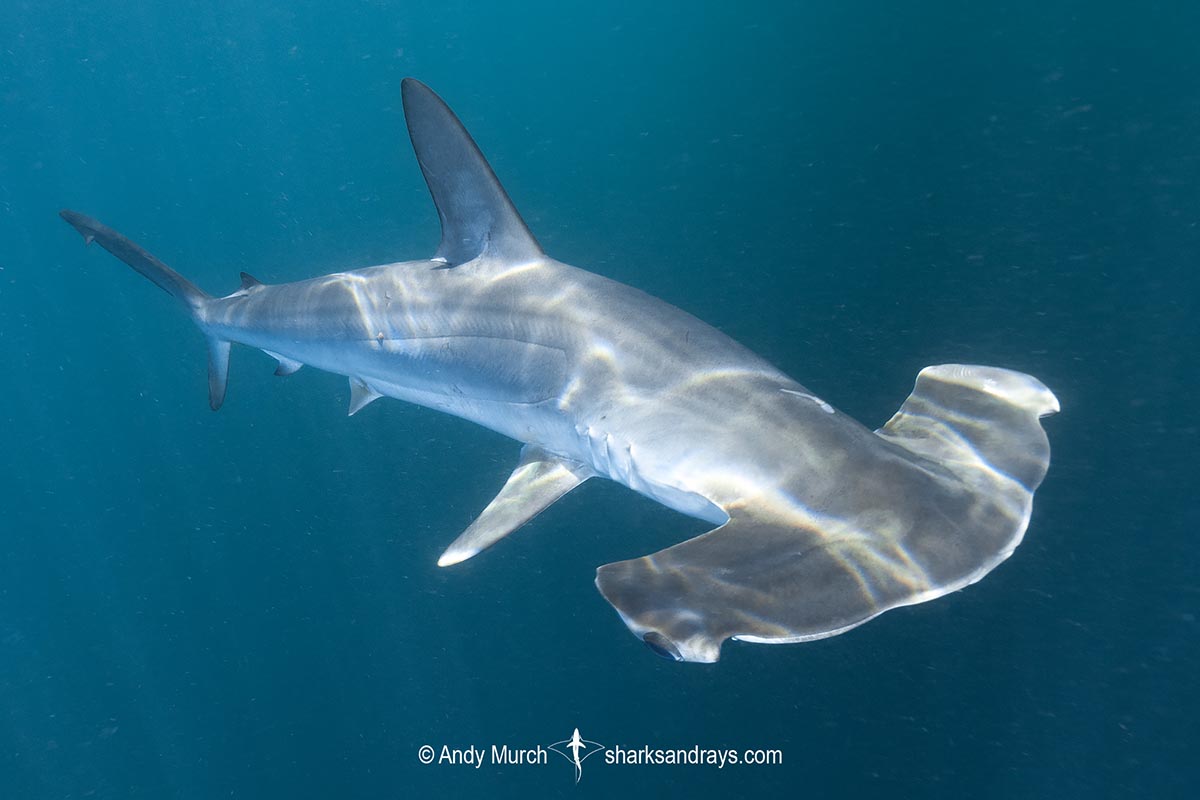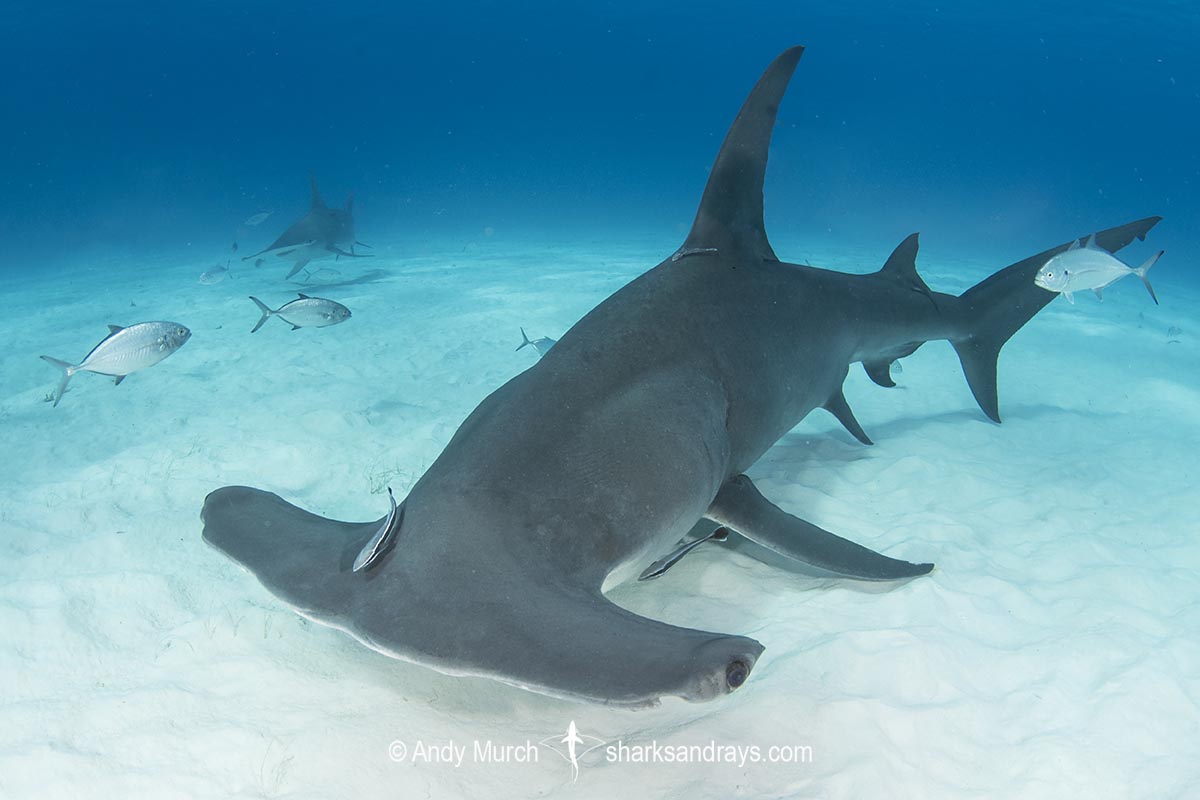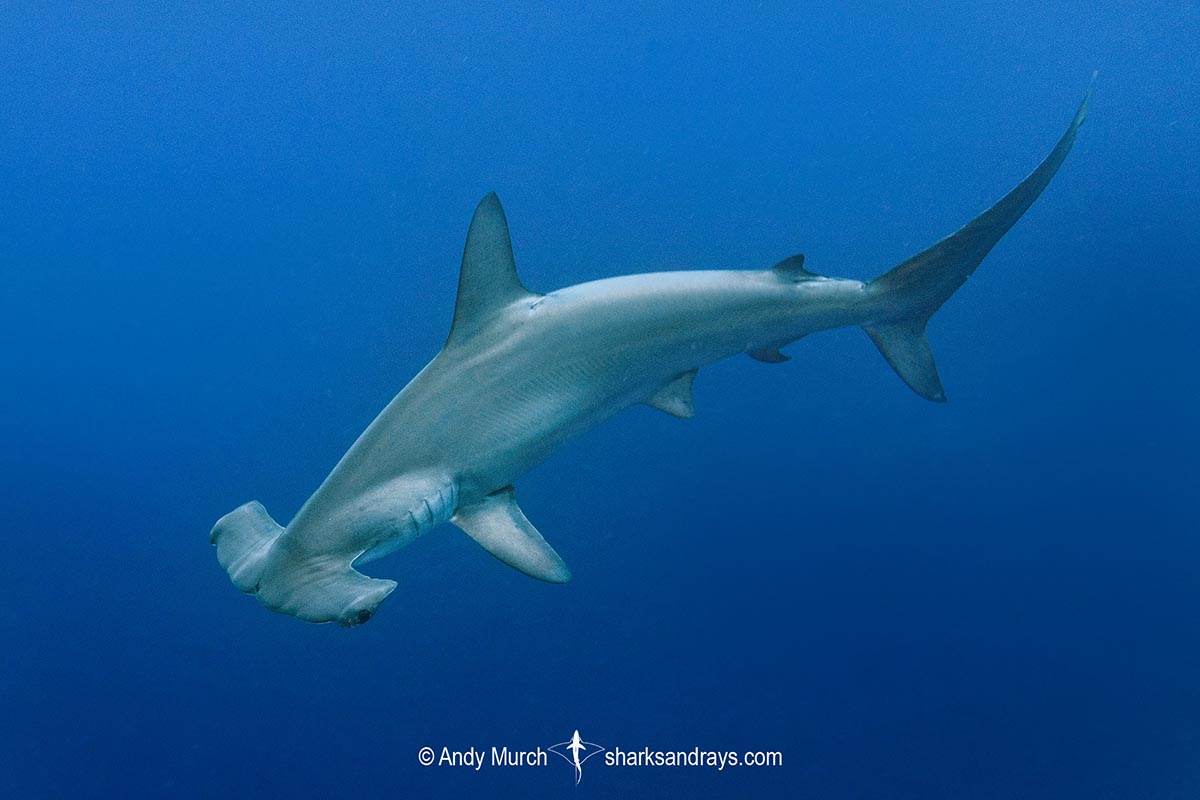Common names
Smooth Hammerhead, Common Hammerhead.
Binomial
Sphyrna zygaena.
Synonyms
Sphyrna zigaena, Spyrna zygaena, Squalis pictus, Squalus carolinensis, Squalus malleus, Squalus zygaena, Zygaena malleus, Zygaena subarcuata, Zygaena vulgaris.
Identification
Anterior margin of hammer rounded with conspicuous lateral notches but no central notch. First dorsal rear margin straight. Free rear tip of first dorsal terminates well before level of pectoral fin origin. Second dorsal fin low with extremely long free rear tip. Pelvic fin posterior margins not noticeably falcate. Body greyish-brown to olive-brown above. Ventral surface pale.
Size
Maximum length approximately 380cm. Maximum lengths sometimes listed as 4m/13ft are from C. R. Gilbert (1967) but he fails to cite any specimens so this is likely his ‘best guess’. Size at birth 50-61cm
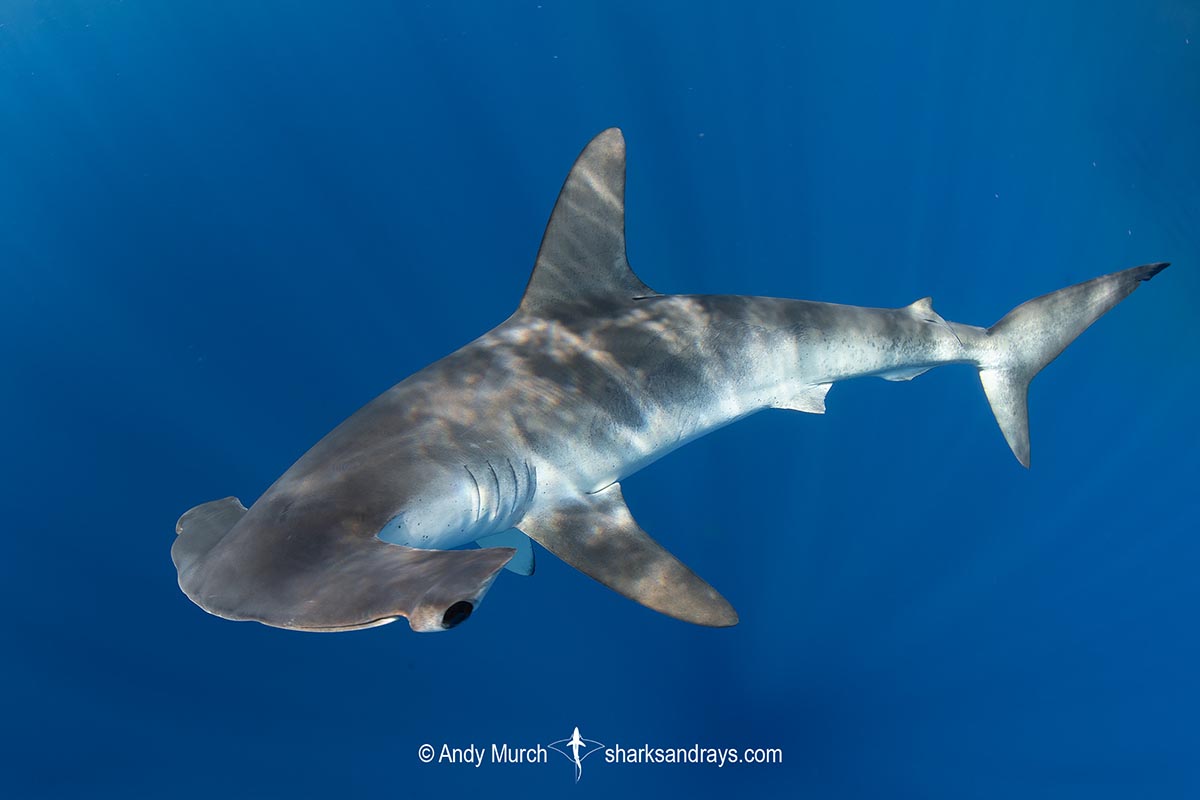
Conservation Status
VULNERABLE
The Smooth Hammerhead is a heavily fished target and bycatch species in longline, purse seine, and gillnet fisheries worldwide. It is retained for its fins, and sometimes its meat. After steep declines were recorded in the Atlantic, the introduction of management measures has resulted in a slow recovery. Declines in smooth hammerhead populations in the South Pacific have slowed, and there have been increases in populations in the Indian Ocean. Catch data indicates a global population reduction of 30–49%.
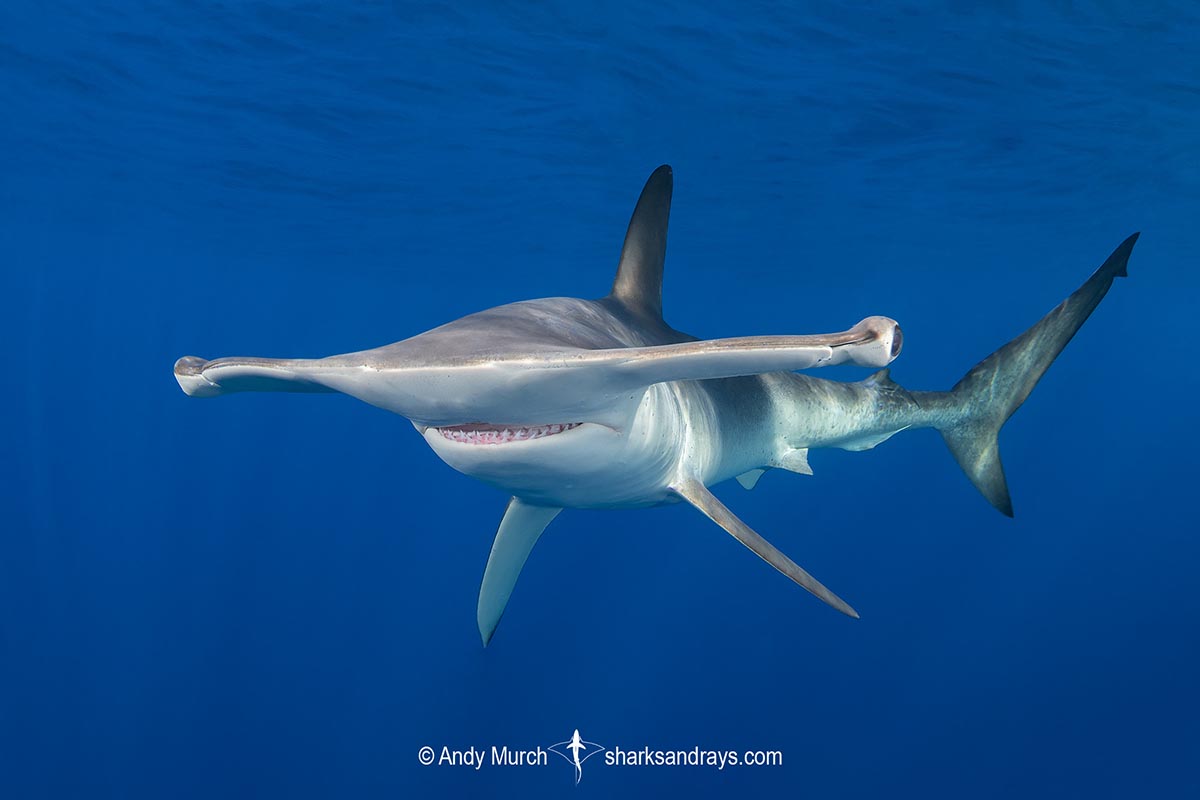
Habitat
Inshore bays to offshore continental shelves. From the surface to at least 55m but based on its preference for cooler water when compared to other hammerheads, the smooth hammerhead probably ventures into deeper water in tropical regions.
In the western North Atlantic, tagged juveniles spent the summer in the New York Bight and then moved south to Cape Hatteras for the winter.
Distribution
Circum-temperate/sub-tropical in most regions. Apparently absent from the Gulf of Mexico. Nursery grounds exist along both sides of the Gulf of California.
Reproduction
A viviparous species with yolk-sac placenta. Litter size 20-50 pups.
Diet
Diet consists mainly of bony fishes, small sharks, skates, and stingrays.
Behavior
Little is known about the habits of the smooth hammerhead. It is rarely encountered on the east coast of North America but more common in the eastern Pacific where it enters shallow bays to give birth e.g. La Paz Bay and protected coastal areas further north in the Gulf of California.
I have seen small juveniles (approx. 80cm) within 1km of the shore near Mboiki Bay and Waterfall Bluff in South Africa, indicating that this is another nursery area.
Reaction to divers
Shy and easily spooked by loud noises such as diver’s bubbles but relatively easy to approach on snorkel in baited situations.
Diving logistics
Traditionally, a difficult species to encounter but the recent (circa 2016) introduction of organized shark feeds near Cabo San Lucas on the southern tip of Baja, has made photographing Smooth hammerheads relatively easy.
Officially, the trips are usually pitched as ‘mako encounters’ but towards the end of mako season, hammerheads are not uncommon.
Some animals tend to be characteristically shy but now and then a ‘player’ will arrive that allows extremely close encounters; essentially circling snorkelers in an effort to reach the bait.
If you are specifically hoping to see smooth hammerheads rather than blue and mako sharks, the best time to look for them in that region would be March to May.
Big Fish Expeditions offers Blue and Mako Snorkeling trips in March when all three species are likely to be encountered.
While chumming for larger sharks near Port Saint Johns in South Africa (during the annual Sardine Run) I have snorkeled with very small juvenile smooth hammerheads that approached the bait even though they were less than 1m long. I would not say this is a location worth visiting in order to see this species but it illustrates how bold smooth hammerheads become in the presence of bait.
Similar species
Great hammerhead distinguished by straighter leading edge of hammer, proportionately taller dorsal fin, and often larger size.
Scalloped hammerhead distinguished by a leading edge of hammer which has a well-defined central notch.
Carolina hammerhead Outwardly identical to the scalloped hammerhead. Range restricted to the western Atlantic.

